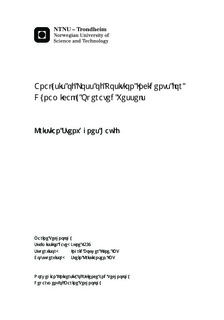| dc.description.abstract | This project sought to identify the causal factors related to loss of position incidents for dynamically positioned vessels, and to explore the possibility of using a Bayesian Belief Network (BBN) to model the identified factors.The causal factors behind loss of position incidents were iand sorted by the author through a study of the DP (Dynamic Positioning) system, and analysis of loss of position incidents reported to the International Marine Contractors Association (IMCA) register.One or more of three categories were found to be present in more than 90% of all loss of position incidents; propulsion failures, position reference failures and human factors. According to IMCA definition, no loss of position actually has to occur for a scenario to be defined as a loss of position incident. This discovery led to the identification of four terminal events (end of the causal chain) of such incidents; drive-off, drift-off, operation abort and time loss. Due to limitations in the available data, about one third of all incidents resulted in an unknown terminal event. Drive-off occurred in 11 % of the incidents and drift-off in 17 %. Consequently, Loss of Position (LOP), as a minimum occurred in 28 % of all incidents reported to IMCA from 2008 to 2010. Dependencies in causal factors such as system failures, and their resulting terminal events were presented. For modelling of such dependencies a Bayesian Belief Network analysis were utilized. The Bayesian Belief Network was constructed upon the same categories of failure as defined through the data sorting. The process of creating the BBN involved establishing causal flowcharts and use of the GeNIe software package.The main findings regarding the method of Bayesian Belief Network analysis, is that this method enabled the combination of qualitative knowledge (beliefs), with data frequencies in a systematic way. Additionally a Bayesian Belief Network allows for a graphical and intuitive presentation of modelled systems, with the possibility of quick and easy sensitivity analysis. However the method has some limitations. In order to be understandable for the reader, the network must be limited in the number of connections between nodes, which may lead to loss of information, especially in large networks. | nb_NO |

